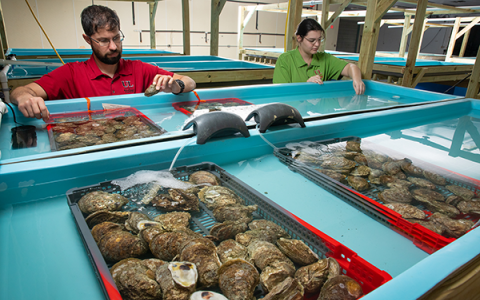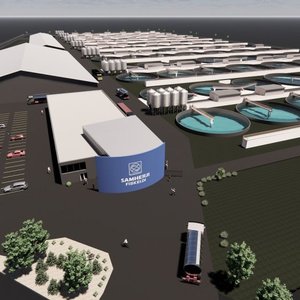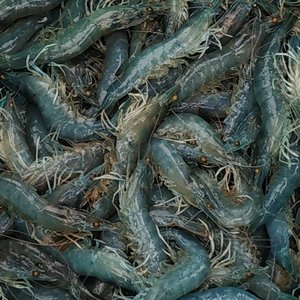The University of Louisiana at Lafayette is steering a $14 million, three-year research initiative to develop oyster broodstock capable of survival in low-salinity environments. Leveraging Opportunities and Strategic Partnerships to Advance Tolerant Oysters for Restoration (LO-SPAT), is designed to help sustain populations of shellfish and support the seafood industry. The Louisiana Department of Wildlife and Fisheries is funding the project. Beth Stauffer, an associate professor in UL Lafayette’s Department of Biology, is LO-SPAT’s principal investigator. Stauffer, a phytoplankton ecologist, and other UL Lafayette researchers are collaborating with scientists from the LSU AgCenter and the University of Maryland Center for Environmental Science Horn Point Laboratory. Spat-Tech, a Mississippi-based oyster aquaculture company, is the private sector partner.
“The objective is to examine low-salinity tolerant populations of oysters. We’re researching how low salinity – and other environmental stressors – factor in, and identifying heritable traits that make some oysters hardier than others,” Stauffer said.
The LO-SPAT team is pooling its expertise in coastal and restoration ecology, environmental monitoring, organismal and molecular biology, economics, and aquaculture and oyster husbandry. Researchers are collectively examining the entire oyster life cycle, from larvae and broodstock to juveniles that can be deployed in nurseries and, ultimately, at restored reef sites.
Creating sustainable breeding operations starts with collecting wild oysters, then introducing them to stressors. The next step is using modern molecular tools to determine which oysters prove capable of growing in unfavorable conditions. “Those oysters are then bred over multiple generations through a process known as selective breeding, which allows producers to build a better oyster using their natural genetic diversity,” Stauffer explained.
Louisiana is one of the nation’s major oyster-producing states. Declining production, however, has created ecological and economic consequences. Increases in rainfall and flooding in Louisiana and along the Gulf Coast in recent years have introduced high amounts of freshwater into oyster habitats and reefs. That’s problematic since shellfish need at least some salt to live and more to grow and reproduce.













